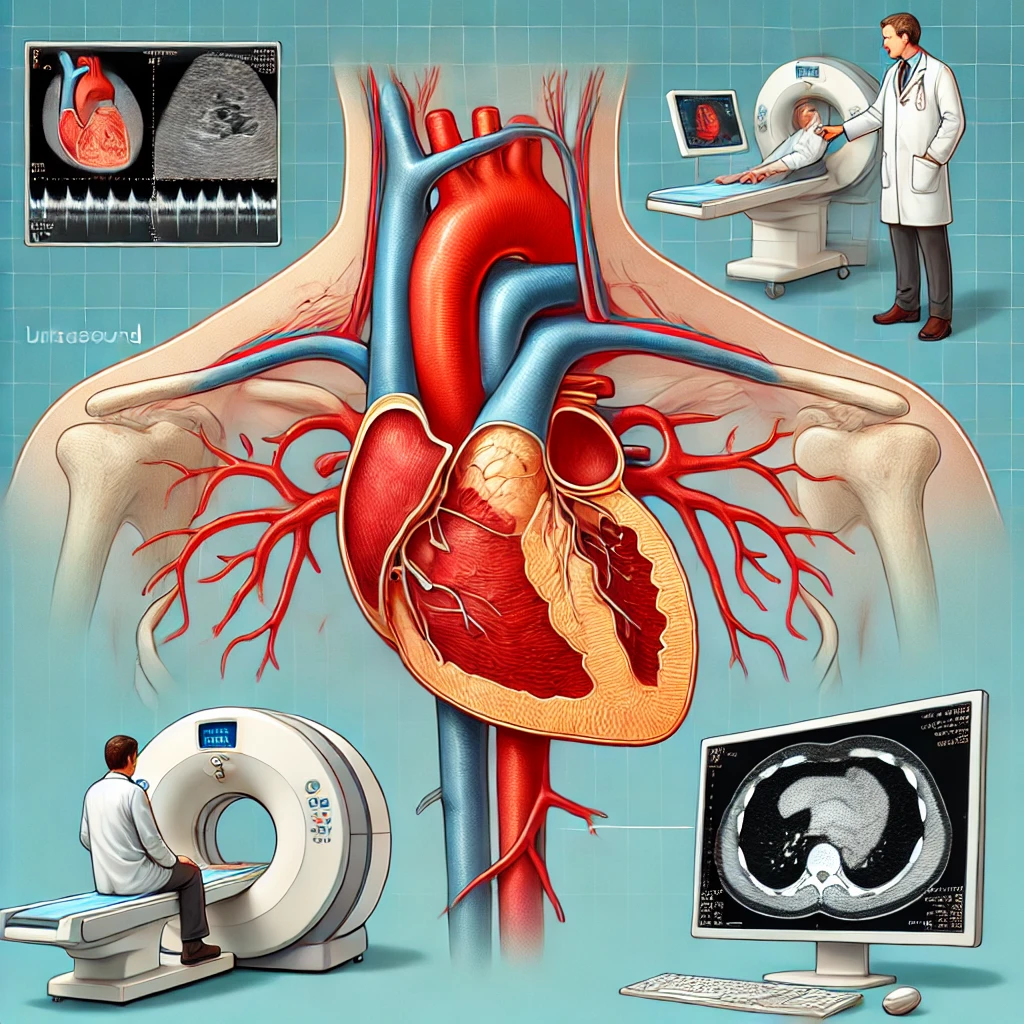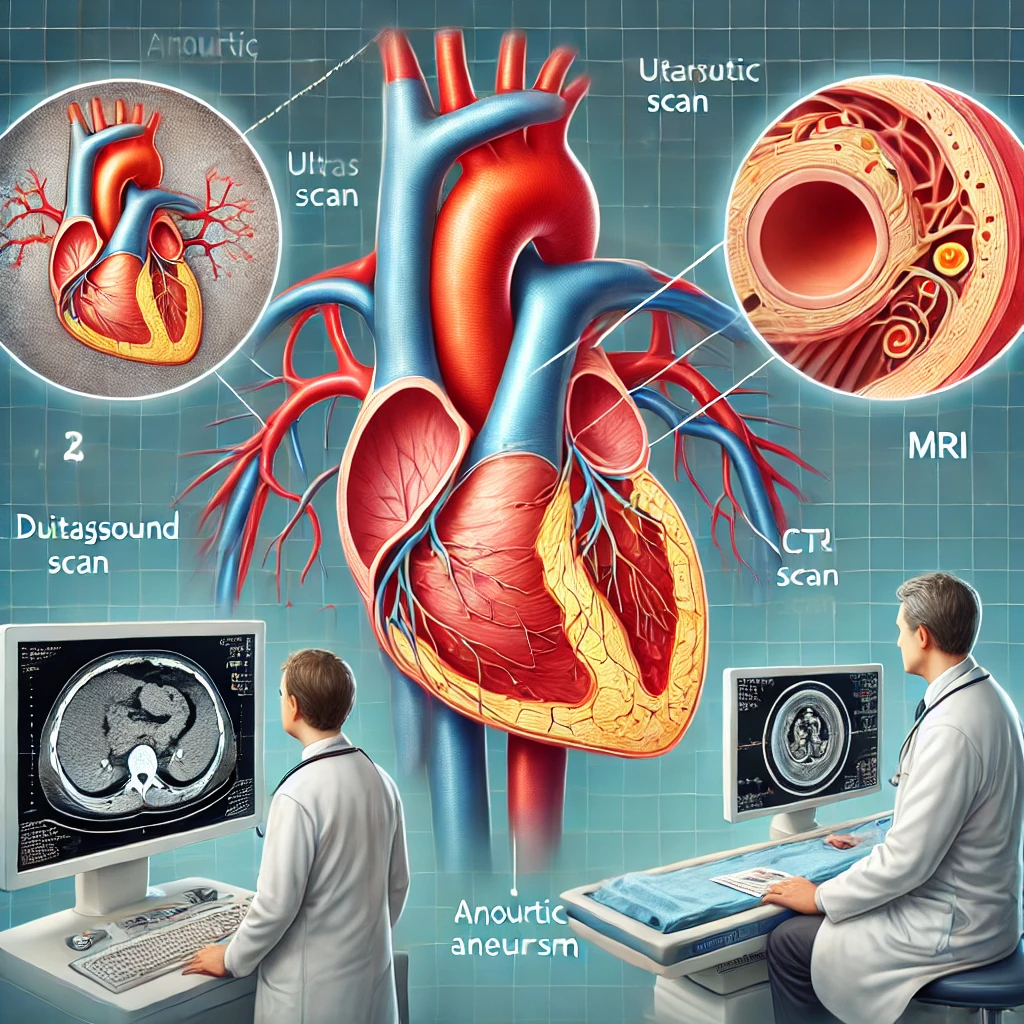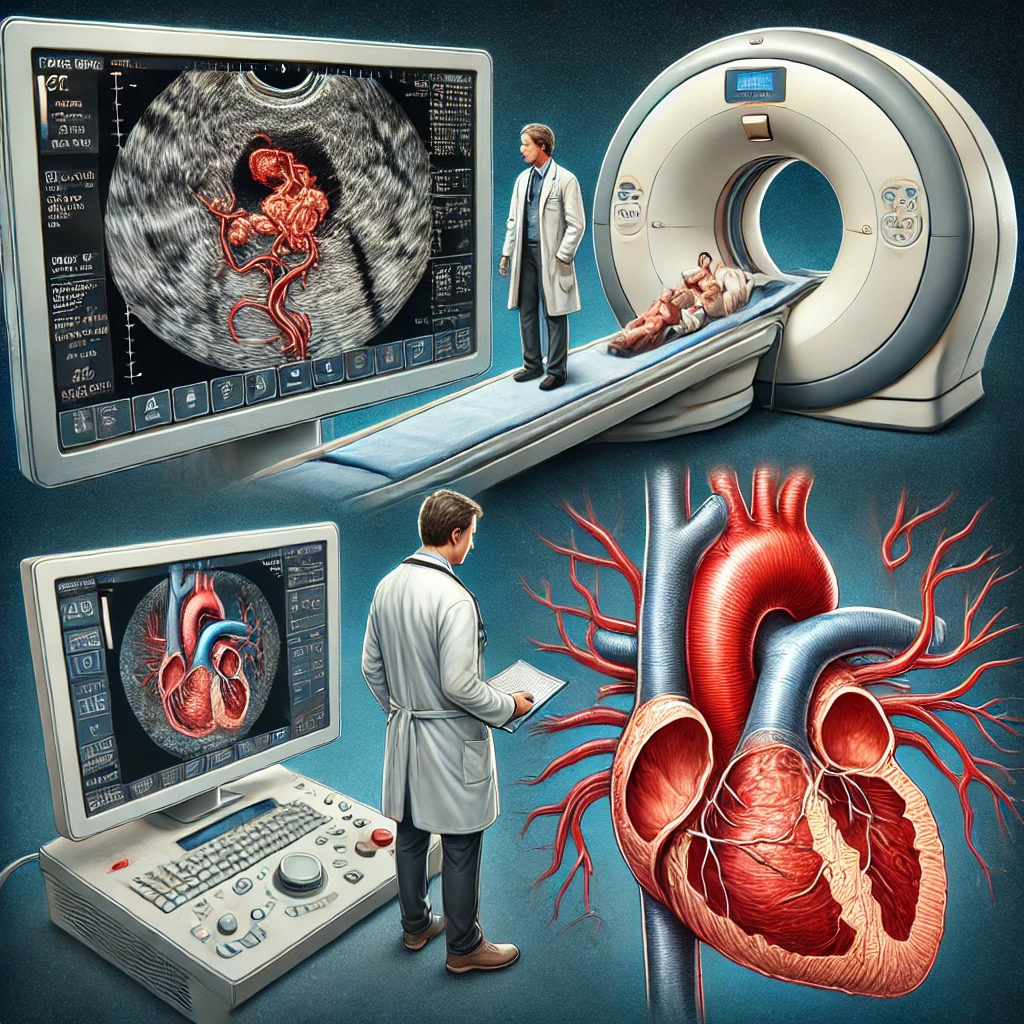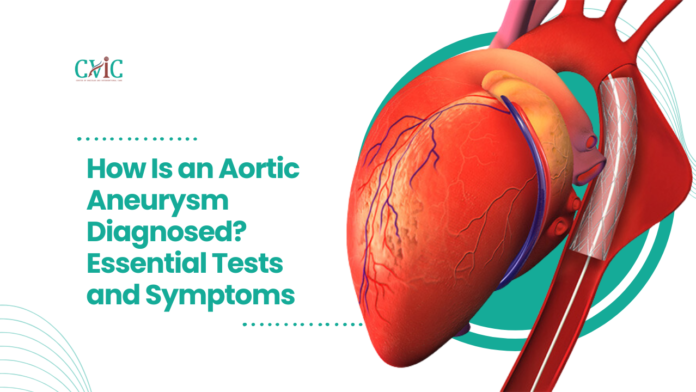An aortic aneurysm is a serious medical condition involving an abnormal bulge or ballooning in the wall of the aorta, the largest artery in the body. It can be life-threatening if it ruptures, so early diagnosis is essential. But how is an aortic aneurysm diagnosed? Understanding the symptoms, the diagnostic procedures, and the reasons for early detection can significantly improve patient outcomes and reduce the risk of complications. In this blog, we’ll explore the steps doctors take to diagnose an aortic aneurysm, from initial symptoms to advanced imaging tests.
What Is an Aortic Aneurysm?
An aortic aneurysm occurs when a section of the aorta weakens and expands, leading to a bulge. There are two primary types of aortic aneurysms:
- Abdominal Aortic Aneurysm (AAA): Occurs in the portion of the aorta that passes through the abdomen.
- Thoracic Aortic Aneurysm (TAA): Develops in the part of the aorta running through the chest.
These aneurysms can grow slowly without symptoms, making early detection a challenge. Left undiagnosed, an aortic aneurysm may rupture, leading to life-threatening internal bleeding.
Common Symptoms of an Aortic Aneurysm
Although many aortic aneurysms do not cause noticeable symptoms until they’re large or on the verge of rupture, some symptoms to be aware of include:
- Abdominal Pain (AAA): Persistent pain in the abdomen, which may spread to the back.
- Chest Pain or Discomfort (TAA): Chest pain or a sensation of pressure.
- Back Pain: Both types can cause severe pain in the lower or mid-back area.
- Shortness of Breath: For TAA, difficulty breathing can be a warning sign.
- Hoarseness or Difficulty Swallowing: As a TAA grows, it may press on the throat, causing these symptoms.
Any persistent or severe pain should be evaluated immediately, especially in individuals with a family history or risk factors for aortic aneurysm.
Also Read: How Can I Prevent Diabetic Foot Problems? 10 Essential Tips for Healthy Feet

Risk Factors for Aortic Aneurysm
Certain factors can increase the likelihood of developing an aortic aneurysm, including:
- Age: Risk increases with age, particularly in individuals over 65.
- Family History: Genetics play a role, so a family history of aortic aneurysm increases risk.
- Lifestyle Factors: Smoking, high blood pressure, and high cholesterol are significant risk factors.
- Underlying Conditions: Conditions like Marfan syndrome, Ehlers-Danlos syndrome, and atherosclerosis can predispose individuals to aortic aneurysm.
How Is an Aortic Aneurysm Diagnosed?
Diagnosing an aortic aneurysm typically involves a combination of physical examinations, imaging tests, and sometimes genetic screening, especially if a family history of aneurysms exists.
Physical Examination
A doctor may start with a physical exam to check for any unusual pulses or signs of a swollen aorta in the abdomen. While this exam alone is rarely conclusive, it can provide essential clues.
Imaging Tests for Aortic Aneurysm Diagnosis
Imaging tests are the cornerstone of diagnosing an aortic aneurysm. Here are some of the primary tests used:
1. Ultrasound
- Purpose: Often used as a first-line screening tool for abdominal aortic aneurysms.
- Procedure: An ultrasound probe placed on the abdomen produces sound waves to create an image of the aorta.
- Advantages: Non-invasive, quick, and painless, making it an effective screening tool, especially for at-risk individuals.
Ultrasounds are particularly effective for detecting abdominal aortic aneurysms. They are often recommended for men over 65 with a history of smoking.
2. Computed Tomography (CT) Scan
- Purpose: To provide detailed cross-sectional images of the aorta.
- Procedure: A CT scan uses X-rays to create images and may involve a contrast dye injection for clarity.
- Advantages: Highly accurate and provides more detailed images than an ultrasound, helping doctors assess the aneurysm’s size, shape, and exact location.
CT scans are often used if an aneurysm is suspected but needs further definition or if surgery is being considered.
Also Read: Best Treatment for an Aneurysm: Key Options to Consider for Optimal Recovery

3. Magnetic Resonance Imaging (MRI)
- Purpose: Offers a detailed view of the aorta and surrounding tissues.
- Procedure: An MRI uses magnetic fields and radio waves to create precise images, especially beneficial for individuals allergic to CT contrast dye.
- Advantages: Provides excellent imaging details and is a preferred option for thoracic aortic aneurysms.
4. Echocardiogram
- Purpose: Primarily used for thoracic aortic aneurysms.
- Procedure: Involves an ultrasound of the heart and chest area.
- Advantages: Useful in examining the heart and aorta together to assess any pressure exerted by a thoracic aortic aneurysm.
Laboratory Tests and Genetic Screening
In some cases, blood tests are conducted to rule out underlying conditions that may contribute to aneurysm formation. Genetic testing may also be recommended for those with a family history of conditions linked to aortic aneurysms.
Screening Recommendations for Aortic Aneurysm
For those at higher risk of aneurysm, regular screening can make a crucial difference. Screening recommendations include:
- Men Over 65: Especially those with a history of smoking, should undergo an abdominal ultrasound.
- People with Genetic Risks: Anyone with a family history of aortic aneurysms or genetic conditions like Marfan syndrome should consider early screening.
Regular follow-up imaging may be advised based on the size of the aneurysm to monitor its growth and make timely treatment decisions.
Why Early Diagnosis of an Aortic Aneurysm Matters
Early detection of an aneurysm enables doctors to monitor and manage the condition before it becomes life-threatening. When detected early, lifestyle changes, blood pressure management, and even surgical options can be discussed to prevent growth or rupture.
An undiagnosed aneurysm, on the other hand, can continue to grow until it poses an imminent risk of rupture. Ruptured aortic aneurysms have a high mortality rate, but with early detection, the risk is significantly reduced.
Also Read: Newest Treatment for Varicose Veins: Innovations in Vascular Health
Treatment Options for Aortic Aneurysm
While smaller aneurysms can often be managed with regular monitoring and lifestyle changes, larger or rapidly growing aneurysms may require surgery. The main treatment options include:
- Endovascular Aneurysm Repair (EVAR): A minimally invasive procedure that involves placing a stent inside the aneurysm.
- Open Surgery: Required for more complex or large aneurysms, where the weakened part of the aorta is replaced with a graft.

FAQs
How common is an aortic aneurysm?
Aortic aneurysms are relatively uncommon, affecting about 1–2% of the population. However, risk increases with age, smoking, and genetic predispositions.
What is the main cause of an aortic aneurysm?
The main causes include high blood pressure, smoking, and genetic disorders. Atherosclerosis and connective tissue disorders can also weaken the aortic walls, leading to aneurysms.
Can you feel an aortic aneurysm?
Most people cannot feel an aneurysm, especially in the early stages. However, large aneurysms may cause pain in the abdomen, back, or chest.
Is an aortic aneurysm treatable?
Yes, treatment ranges from regular monitoring to surgery, depending on the size and risk of rupture. Early diagnosis greatly improves treatment options and outcomes.
How often should you be screened for an aortic aneurysm?
Men over 65 with a history of smoking should have a one-time screening. Those with genetic risk factors may require more frequent monitoring.
Are aortic aneurysms hereditary?
Yes, family history and genetic conditions like Marfan syndrome can increase the likelihood of developing it.
Conclusion
The diagnosis of an aneurysm involves careful assessment of symptoms, risk factors, and detailed imaging studies. Early diagnosis through routine screening, particularly for at-risk groups, can make a substantial difference in managing the condition effectively and preventing life-threatening complications. Recognizing symptoms and understanding the various diagnostic tests are crucial steps in managing and treating aortic aneurysms. If you or a loved one is at risk, consult a healthcare professional to discuss screening and preventive options.




